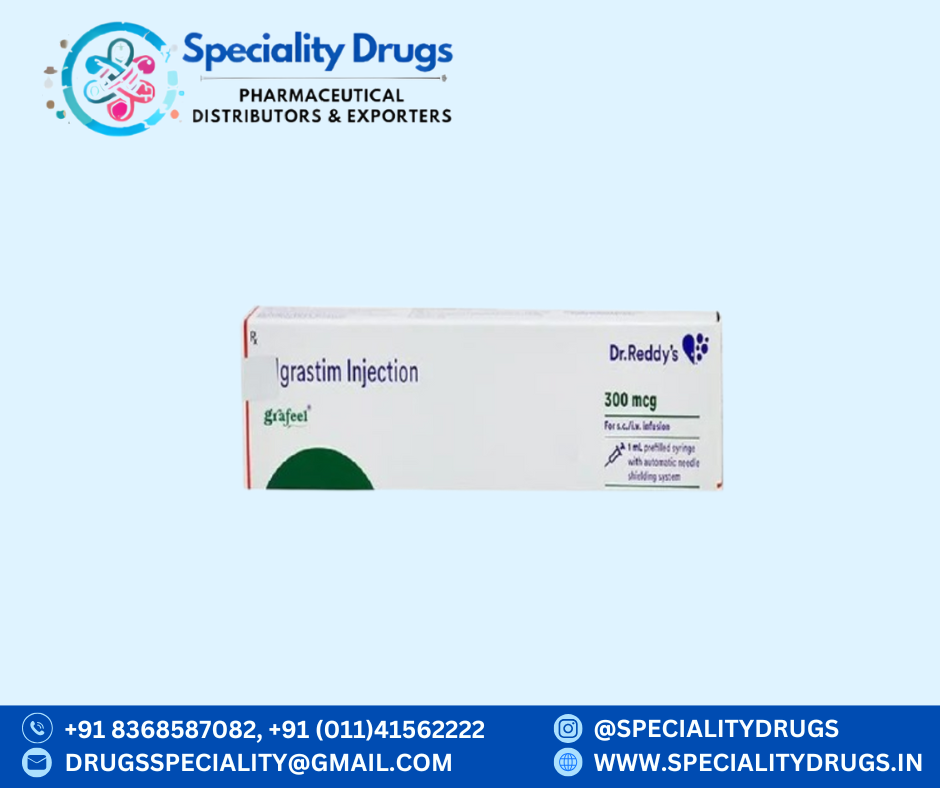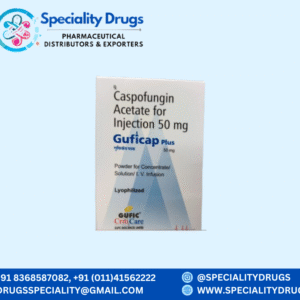What is GRAFEEL PFS INJ?
GRAFEEL PFS INJ is an injectable anticancer medicine containing Filgrastim as its active ingredient. Filgrastim is a recombinant human granulocyte colony-stimulating factor (G-CSF) used to stimulate the production of white blood cells (neutrophils) in patients with neutropenia.
It is often used in patients undergoing chemotherapy, bone marrow transplantation, or chronic neutropenia to reduce the risk of infection.
What is the use of GRAFEEL PFS INJ?
-
To prevent or treat neutropenia (low white blood cell count) caused by chemotherapy.
-
To reduce the risk of infection in patients with bone marrow disorders or post-transplant.
-
To mobilize stem cells in patients undergoing hematopoietic stem cell transplantation.
Benefits of GRAFEEL PFS INJ:
-
Increases the production of neutrophils to improve immune defense.
-
Helps patients tolerate chemotherapy by reducing infection risk.
-
Supports faster recovery of white blood cells after chemotherapy.
-
Can be used for stem cell mobilization for transplantation.
Side Effects of GRAFEEL PFS INJ:
-
Common side effects:
-
Bone pain or muscle pain
-
Headache
-
Mild fever or fatigue
-
Injection site reactions (redness, swelling)
-
-
Less common/serious side effects:
-
Splenomegaly or spleen rupture (rare)
-
Severe allergic reactions (rash, swelling, difficulty breathing)
-
Low platelet count or bleeding disorders
-
Note: Patients should be monitored for blood counts and spleen size during treatment.
Dosage and Administration:
-
Administered subcutaneously (under the skin) or intravenously as prescribed by a healthcare professional.
-
Dosage depends on body weight, type of chemotherapy, and neutrophil counts.
Q1. What is GRAFEEL PFS INJ used for?
It is used to increase white blood cell count in patients with neutropenia, particularly during or after chemotherapy.
Q2. What is the active ingredient in GRAFEEL PFS INJ?
The active ingredient is Filgrastim, a recombinant human granulocyte colony-stimulating factor (G-CSF).
Q3. How does GRAFEEL PFS INJ work?
It stimulates the bone marrow to produce more neutrophils, helping the body fight infections.
Q4. How is GRAFEEL PFS INJ administered?
It is given subcutaneously (under the skin) or intravenously, usually by a healthcare professional.
Q5. Can GRAFEEL PFS INJ prevent infections during chemotherapy?
Yes, it reduces the risk of neutropenia-related infections in chemotherapy patients.
Q6. What are the common side effects?
Bone or muscle pain, headache, mild fever, fatigue, and injection site reactions.
Q7. Are there any serious side effects?
Rarely, it may cause splenomegaly (enlarged spleen), spleen rupture, severe allergic reactions, or low platelet counts.
Q8. Can GRAFEEL PFS INJ be used for stem cell transplantation?
Yes, it is often used to mobilize stem cells for collection before hematopoietic stem cell transplantation.
Q9. Can children take GRAFEEL PFS INJ?
Yes, but dose and schedule must be adjusted according to body weight and medical condition.
Q10. How long does it take to increase white blood cell count?
Typically, neutrophil counts begin to rise within 1–2 days, depending on dosage and patient response.
Q11. Can GRAFEEL PFS INJ be stored at room temperature?
No, it should be stored at 2–8°C (refrigerated) and protected from light. Do not freeze.
Q12. Can pregnant or breastfeeding women use this injection?
Use only if prescribed by a doctor; safety in pregnancy or breastfeeding should be assessed individually.
Q13. Can I self-administer GRAFEEL PFS INJ at home?
Some patients may be trained for self-injection, but it should follow medical guidance and proper storage protocols.
Q14. What should I do if I miss a dose?
Contact your doctor for guidance, as timing is critical during chemotherapy schedules.
Q15. Is regular monitoring required during treatment?
Yes, complete blood counts and spleen monitoring are recommended during therapy to ensure safety and effectiveness.






Reviews
There are no reviews yet.